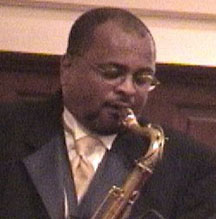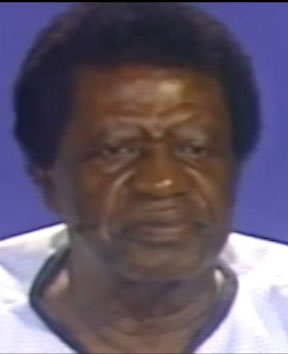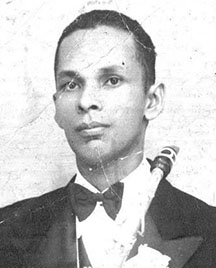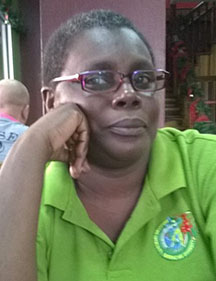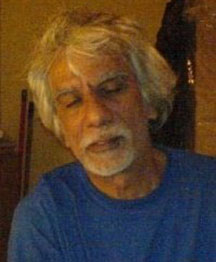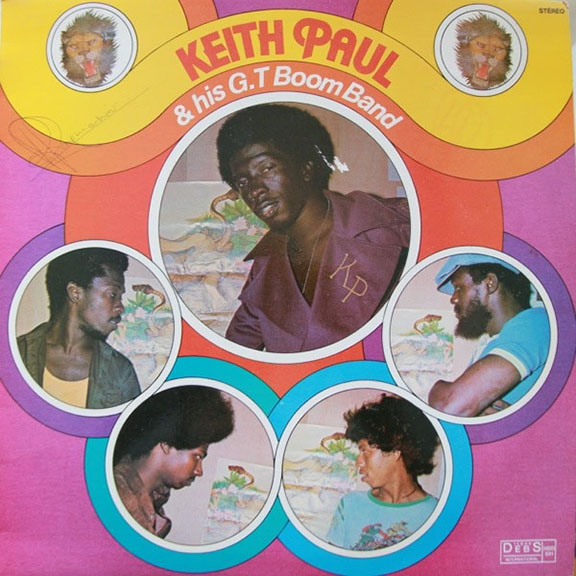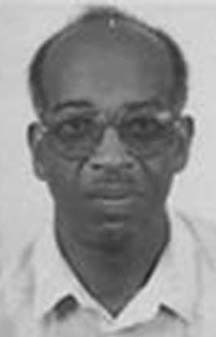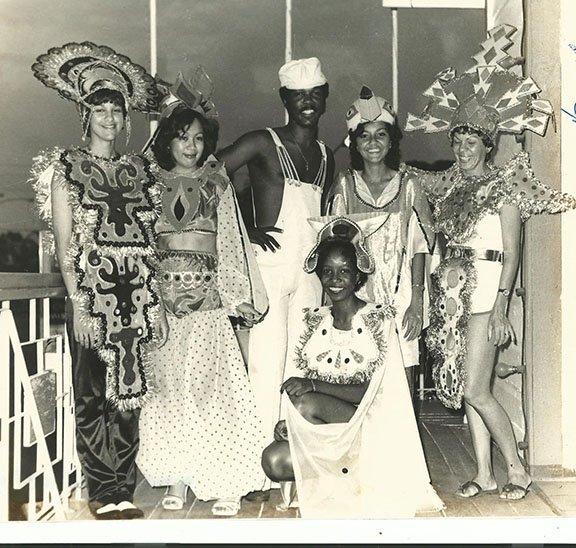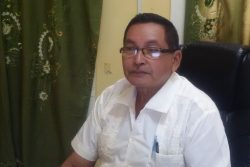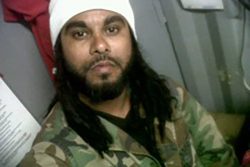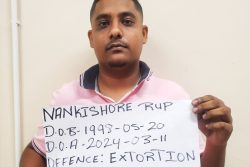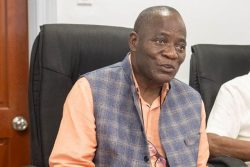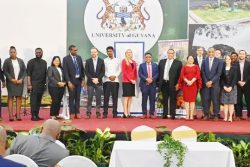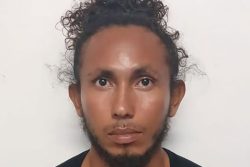By G Derry Etkins
Guyana, a land with a rich Cultural heritage, is still to develop a sound, or sounds, of her own!
We were given the music and the instruments from the European tradition, so-called Classical Music, when we came to Guyana. At the same time, we brought our various musical styles, and some of our instruments with us. There was some music already here, that unfortunately, we still do not know much about; that of our Amerindian brothers.
It is my understanding, that in the late sixties or early seventies, Keith Waithe (flute), Keith Joseph (double bass), a musician playing the Tabla, and a few others whose names I don’t recall, did some experimentation. I don’t know of the circumstances, neither do I know of the results.
Ray Seales, and I think, Vibert Cambridge, mentioned another groove/beat, the Bion. They credit Al Seales with its development. That might have been in the 50s or 60s, but again, it seems as though there wasn’t widespread support for that effort.
In 1966, when Guyana became independent, Tom Charles and the Syncopators, one of the big bands at the time, experimented with a groove/beat called, the Bhoom. It sounds like it was based on the Masquerade groove/beat. The song I remember clearly is one called, “Guyana Bhoom”. On Independence Day 2014, thanks to Ray Seales, I became aware of another one called, “Happy Day Bhoom,” an instrumental piece. Find this online at: https://www.facebook.com/video.php?v=10202955866471201&set=vb.1039808083&type=2&theater
There was a measure of support from other local bands; Bumble and the Saints recorded, “Bumble’s Bhoom”. There might have been others, but I don’t remember.
In 1971-72, Pat Clarke asked one of the popular bands of the time, the Gradu8s, to facilitate an experiment he was working on. He had called it, the Mashqui (pronounced, Mash Key). He even went as far as to launch it at the Pegasus Hotel. I think five people turned up! That effort got no support outside of the Gradu8s.
Around that same period, Terry “Omar Farouk” Nelson made a valiant effort as well. He started, Halagala Records at his Beterverwagting (BV) Studio facility. He experimented with the Afrindi groove/beat. I cannot cite any examples of his work, but I remember him being very dedicated. He had set up a store in the Stabroek Market area, in the building opposite a now abandoned gas station, located just west of Parliament Building. This effort came after his hit song, in honour of Guyana’s independence. Find this on YouTube: https://www.youtube.com/watch?v=D4hY2Y6cfJU
Terry’s results, however, were short lived.
In the early 70s, Eddie “Lord Inventor” Hooper experimented with another groove/beat, the Lopie (Lopey?). Maybe because he was a songwriter, his efforts brought him a bit more longevity than his predecessors. His songs may have been more accessible to listeners and would have lingered more in their minds. Someone mentioned, that Eddie also wrote songs, supporting the Bhoom.
In the early eighties, 1982-83, Solo Sounds International (SSI) experimented with the masquerade groove/beat. One of the pieces that resulted, “Coco’nut Broff”, was used as the theme for a Radio Programme, “Culture And Entertainment”. SOLO had sponsored that programme.
One of our local artistes, Lee Houston, recorded two songs, “Banga Mary” and “Free Namibia”, with SSI as the backing band. He allowed us to inflict ourselves on them. We did the recordings at the National Cultural Centre, with Dennis “Willo” Wilson and Joslyn Small as co-engineers. Coming out of the Houston – SSI collaboration, the members of SSI cutely referred to the resulting groove as the Fish Beat! I guess they liked Banga Mary. Listen on YouTube: https://www.youtube.com/watch?v=YL2h5QMeiJs
Around the same time, Neil Chan, SSI’s manager, sponsored a huge event at the National Park, Smile Guyana! The theme music for that show featured the Masquerade groove/beat.
The name Bhoom resonated among younger musicians over the years. One such musician, Keith Paul, named his band, the GT Bhoom Band.
Various people, at various times, have facilitated subsequent experiments. Deodat Persaud is one such person. On one of Waithe’s visits to Guyana, he arranged for a session at the now defunct Sidewalk Café. Waithe, an Indian ensemble from the Ashram in Cove and John and a group of drummers from Buxton Fusion played together there. Watch and listen on YouTube: https://www.youtube.com/watch?v=Us4QW5HFNm8
In November 2014, Andrea Mentore facilitated a jam session at the National Centre For Education Resource Development (NCERD). Mark Cyrus and Otis Gibson played Masquerade drums; Leary McKenzie played percussion; Teacher Raghu played the Dhantal, an Indian percussion instrument; ‘Three foot’ Cumberbatch from Linden played the penny whistle/fife; Deryck Callender played the electric bass.
In December 2014, I was part of a similar collaboration, this time at Jerries’ All Night Long. The members of the Masquerade band, Fire in the Land along with George Reid (bass), Trevor Rogers (keyboard), Michael “Smitty” Smith and Andrew Tyndall (pan) played, and we added to the momentum. Gordon Burnett, Andrea Mentore and Paloma Mohamed lent their support to this venture. This type of musical interaction is a necessary part of our journey to an authentic Guyana sound.
Research into the music of our Amerindian brothers is currently underway. This, too, is a source of raw material that we can incorporate into our soundscape, as well as into our sound.
We came to Guyana from six different parts of the world. There is a wealth of valid material that we can smelt in the furnace of our boundless creativity. The result will be a collection of uniquely Guyanese musical styles.
Brazil, Trinidad, Jamaica, the French West Indies and Cuba are shining examples of some of our neighbours that have successfully made this journey. Having said that, researchers say, that in the case of Jamaica, there was more than “the will of the people” at play (pardon the pun). According to this research, former Prime Minister Edward Seaga was a record producer prior to running for office there and, after becoming a public figure, he took an active part in pushing the development of Jamaican music.
Governmental involvement and facilitation would be definitely be of great help, in developing Guyanese music.
One area in which the government can assist, is making music an integral part of the curriculum in all of our schools, from nursery to secondary. This will require teachers being trained specifically to teach music. Just for clarification, being trained does not mean knowledge of music, and skill on an instrument; it means, knowing how to teach music.
Further, when these teachers teach, they need to teach to empower, rather than merely teach to inform. Their students must be taught the skills to use and apply the knowledge acquired. These skills include composition, analysis, song writing, music transcription, arranging, conducting and studio production.
In this way, we will create a cadre of people, armed with knowledge, skill and creativity, bringing their varied perspectives to bear on our musical raw material. This new musical army will create the uniquely Guyanese music we so badly need.
Let’s make it happen!
(First published in the February edition of Guyana Cultural Association’s online magazine.)

